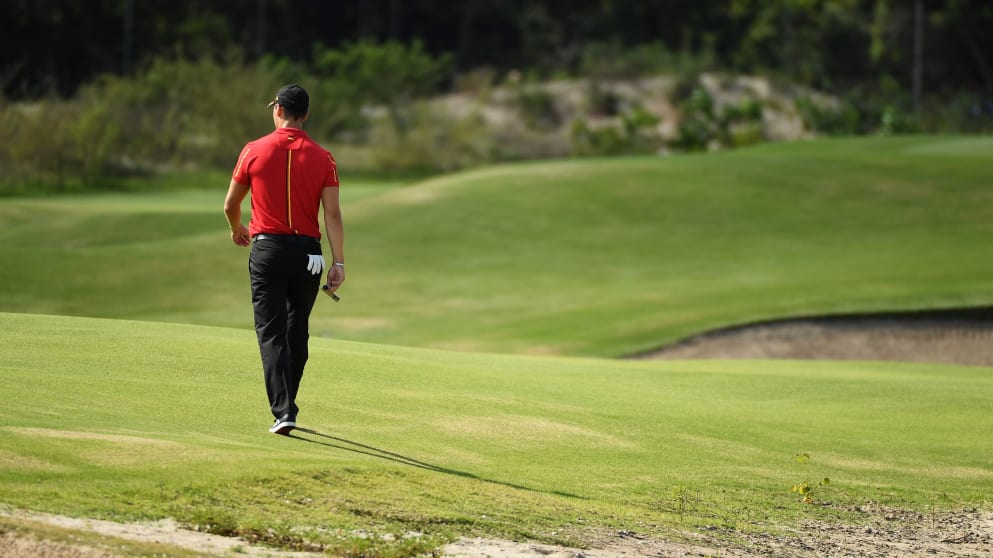Golf’s long-awaited return to the Olympic Games takes place on the 7,128-yard par 71 Olympic Golf Course in the Barra da Tijuca district of Rio. The course was designed by American Gil Hanse, the renowned architect behind the restoration of Major Championship venues Oakland Hills Country Club and Winged Foot Golf Club.

Hanse gives his views on some of the key holes that will determine who leaves Brazil with a medal in their pocket…
Hole 4 – Par 3 – 189 yards
“One of the most beautiful holes on the course, this mid-length par three is set next to the open sand and scrub vegetation that provides the site with its most interesting landscapes.
“Once on the green, the real challenges begin as the undulating character of the green creates not only interesting pin positions, but also some interesting putts.”
Hole 7 – Par 4 – 482 yards
“Potentially the most difficult hole on the course, this long par four plays head on into the prevailing wind.
“The tee shot needs to avoid deep fairway bunkers on the right side of the hole. If these are navigated, players will be up on a ridge with a good angle and great visibility into the hole.
“Golfers who play away from the bunkers will catch a strong side slope and be fed further left and down into a bowl. From this position the green is not completely visible and the hole plays longer.”
Hole 9 – Par 4 – 363 yards
“The front nine concludes with a short par four that, depending on setup, could be drivable during one of the rounds.
“The distinctive feature of this tee shot is the cashew tree sitting on a dune that we found and decided to leave because of its unique character.
“This is one of the holes on the course that we are most excited to see the best players take on and try to figure it out.”
Hole 12 – Par 4 – 500 yards
“The toughest stretch of holes on this course starts with the 11th and is only amplified by the very difficult 12th.
“The longest par four on the course starts from a slightly elevated tee position playing back into the lower section of the course. The green is hemmed in on both sides and the second shot is a demanding one, with a protected native area close to the right side of the green and the lagoon well to the left.
“With all of this trouble around the green there was no need for additional hazards, just tightly mown turf surrounding the green.”
Hole 13 – Par 4 – 466 yards
“Golfers will emerge on the 13th tee and play a hole that looks unlike any other on the property.
“The 13th enters the section where mature vegetation flanks both sides of the hole. On the inside corner of the dog-leg right hole is the largest tree on the property, although golfers will play over the tree if they are looking for the most aggressive line to the hole.
“The plateau green is the most undulating on the course and we decided that we hadn’t yet created a hole where the primary defence for the second shot is the contouring of the green itself. This green took care of the concept.”
Hole 18 – Par 5 – 566 yards
“The tee shot plays over a native sand and scrub area to a heavily bunkered landing area. Complicating matters is the fact that the landing area is partially obscured by the topography in the area and players will need to pick a line and trust it.
“To the front right side of the green is a deep valley and steep rise to the green, reminiscent of the Valley of Sin on the Old Course at St Andrews. Playing a shot out of this area will require a skilful touch as the final green is small, but has some of the most interesting contours on the entire course.”




